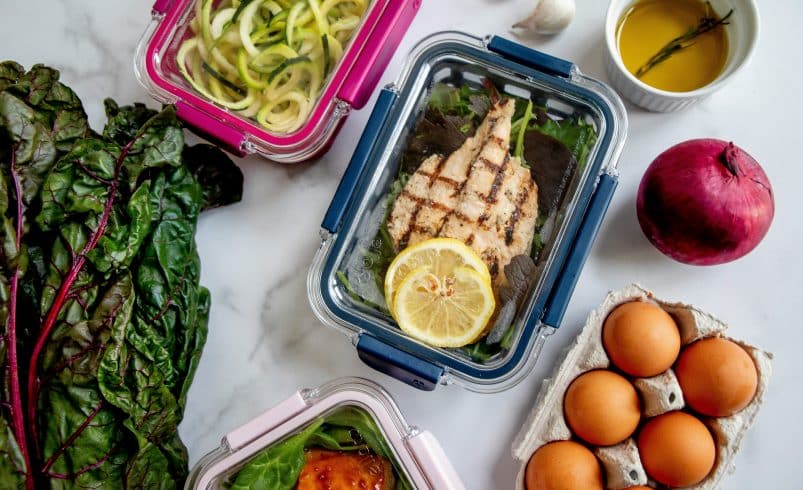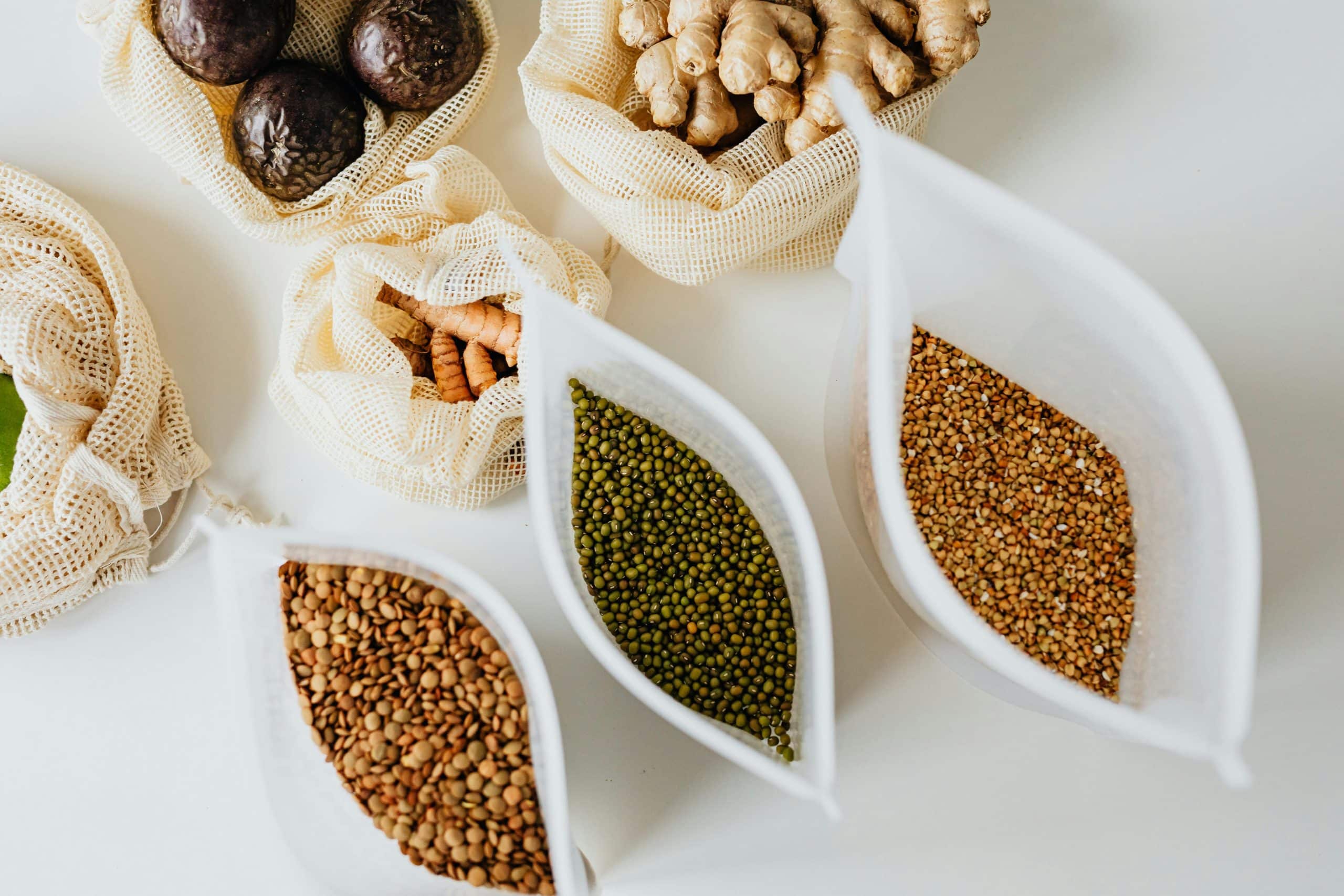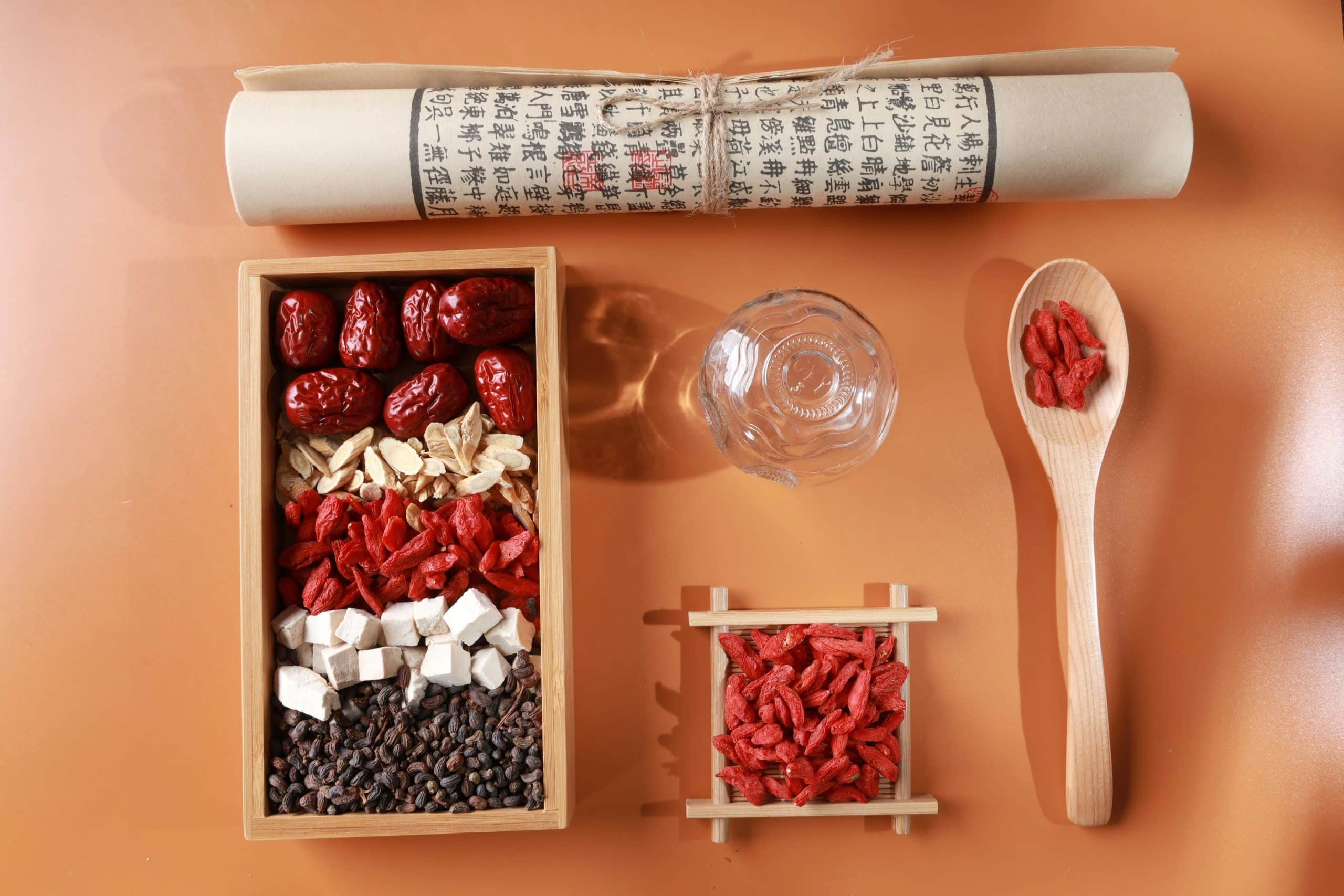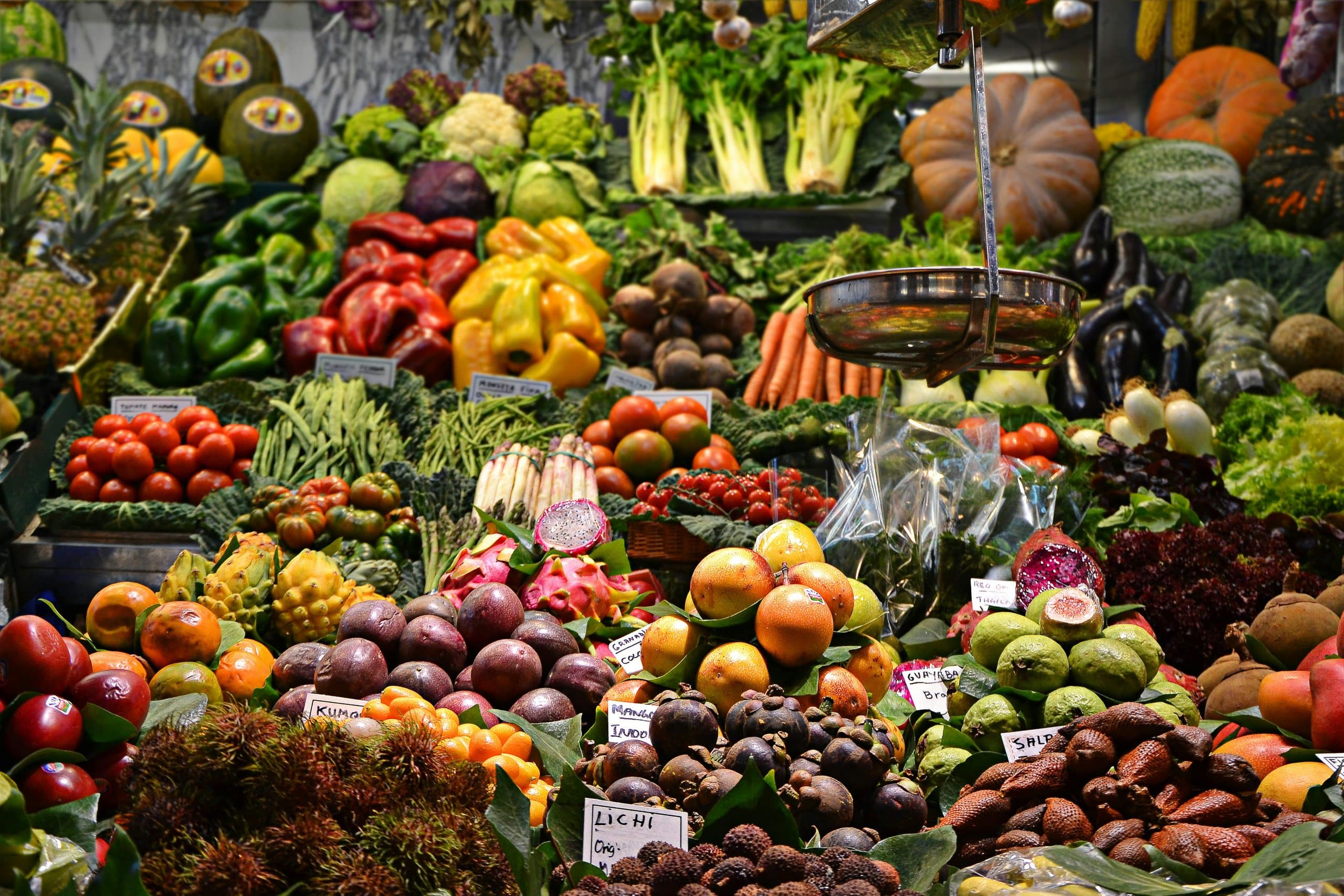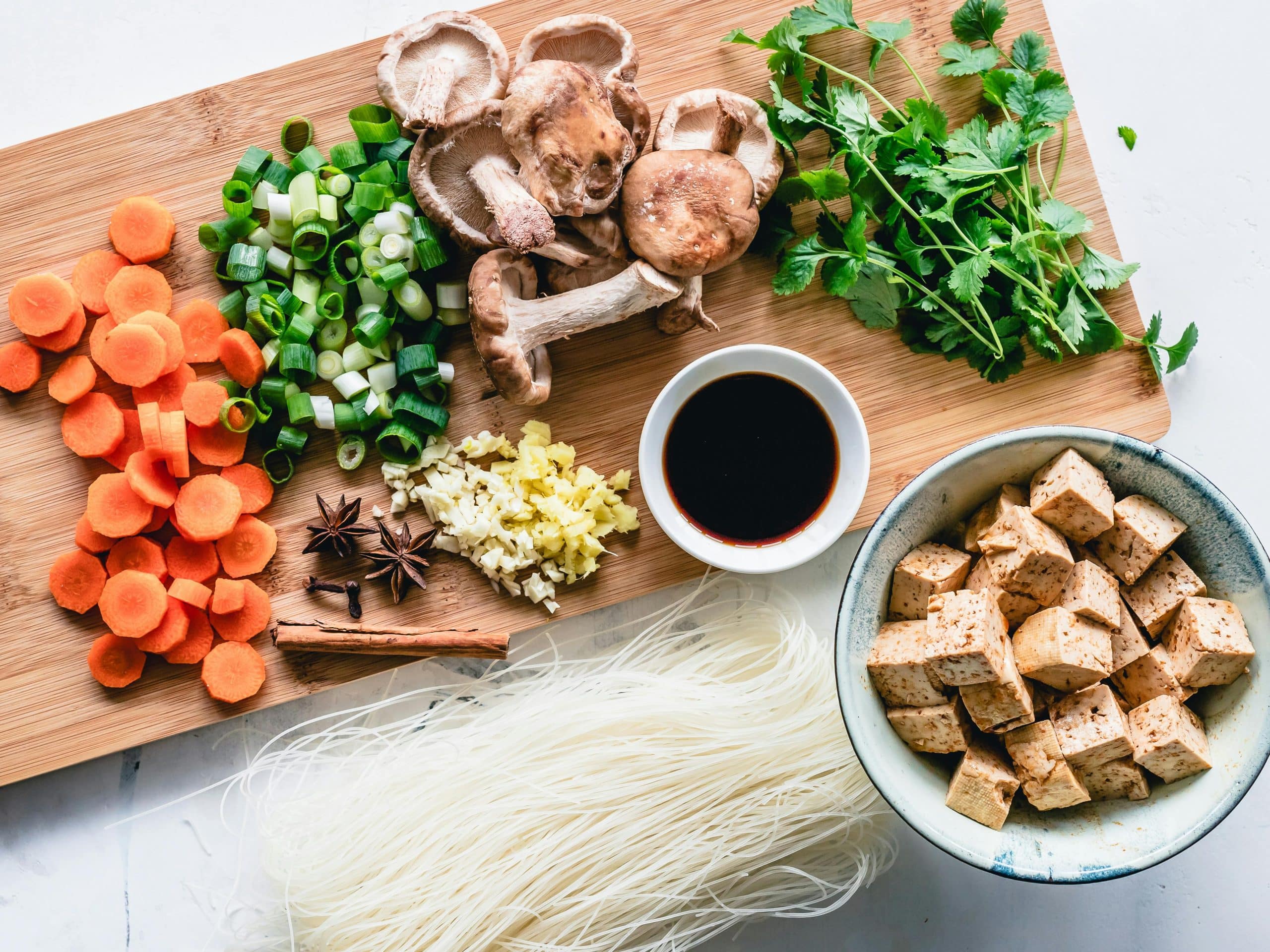We’ve all been there—Sunday evening rolls around, and the thought of planning healthy meals for the upcoming chaotic week feels overwhelming. According to a recent study by the American Heart Association, the average American consumes nearly 17 teaspoons of added sugar daily—more than triple the recommended amount for women. When our schedules get packed, convenience often trumps nutrition, leading us down the sugary path of takeout and processed foods. I struggled with this balance until discovering that low-sugar meal prepping doesn’t require hours in the kitchen or bland, joyless eating. These practical meal prep strategies have transformed my busy weeks, keeping energy levels steady while satisfying cravings. Ready to simplify your week while cutting unnecessary sugars? Let’s explore how.
Why Low-Sugar Meal Prep Matters
Blood sugar fluctuations significantly impact your workday performance. That mid-afternoon energy crash following lunch? It often stems from consuming excessive sugar earlier in the day. When blood glucose spikes rapidly after a high-sugar meal, your body responds with a surge of insulin, eventually leading to below-normal blood sugar levels. This biochemical roller coaster manifests as fatigue, irritability, and diminished focus precisely when you need mental clarity.
Many people don’t realize how pervasive hidden sugars are in supposedly “healthy” convenience foods. A typical store-bought smoothie can contain up to 50 grams of sugar—equivalent to about 12 teaspoons! Granola bars, bottled salad dressings, and even many “low-fat” options compensate for flavor with added sugars. These hidden sweeteners contribute to chronic inflammation, insulin resistance, and stubborn weight gain over time.
Maintaining stable blood sugar offers compelling benefits for your professional life. Research published in the Journal of Occupational Health Psychology demonstrates that workers with consistent glucose levels report 27% higher productivity scores compared to those experiencing significant fluctuations. Stable energy translates to sustained focus, enhanced problem-solving capabilities, and greater resilience during challenging tasks.
The science behind low-sugar eating extends beyond physical energy. A 2020 study in the American Journal of Clinical Nutrition found that participants following a reduced-sugar diet for just two weeks showed measurable improvements in working memory tests and reported fewer symptoms of anxiety and depression. These cognitive benefits stem from reduced inflammation in the brain and more consistent neurotransmitter function.
Beyond weight management, adopting a low-sugar approach yields numerous quality-of-life improvements. Many people report deeper, more restorative sleep when blood sugar remains stable overnight. Skin clarity often improves as inflammation decreases. Perhaps most significantly, reducing sugar intake typically diminishes cravings over time as taste buds recalibrate to appreciate natural flavors. This creates a positive feedback loop that makes maintaining a low-sugar lifestyle increasingly effortless.
Essential Kitchen Tools for Efficient Low-Sugar Meal Prep
Glass containers with compartments serve as the foundation of successful meal preparation. The physical separation prevents flavors from blending while providing visual portion control. Rectangular containers maximize refrigerator space efficiency. Select sets with leak-proof lids and oven-safe glass to minimize container transfers when reheating meals.
Time-saving appliances dramatically reduce active cooking time. A multipurpose Instant Pot can prepare protein from frozen in under 30 minutes, while a programmable slow cooker transforms tough, economical cuts of meat into tender meals while you’re at work. For convenient vegetable preparation, consider an immersion blender for quick soups and sauces without transferring hot liquids to a traditional blender.
Budget-friendly vegetable preparation tools earn their minimal investment quickly. A spiralizer transforms zucchini, carrots, and sweet potatoes into noodle alternatives in seconds. A mandoline slicer with safety guard creates uniform vegetable slices for even cooking and professional presentation. Even a simple vegetable chopper with interchangeable dicing grids can reduce preparation time by 75% compared to knife skills alone.
Silicone baking mats and unbleached parchment paper enable oil-free cooking methods that reduce both calories and clean-up time. Silicone mats prevent food from sticking without added fats and wash easily in the dishwasher. Parchment paper creates convenient pouches for steaming fish and vegetables with herbs, yielding moist, flavorful results without added sugars or oils.
For transporting meals, consider a small investment in reusable quality. Insulated lunch bags with built-in ice packs maintain food safety temperatures. Collapsible silicone containers save space when emptied. Stainless steel containers prevent plastic-related concerns while lasting for years. Reusable silicone bags in various sizes replace disposable options for snacks and side items.
Accurate portion measurement remains crucial for nutrition tracking and recipe consistency. A digital food scale with multiple measurement units simplifies both cooking and portion control. Many models now include nutritional calculation features that integrate with smartphone apps, helping you fine-tune macronutrient ratios for optimal energy throughout your day.
Smart Shopping: Low-Sugar Ingredients to Keep Stocked
A well-stocked pantry eliminates last-minute high-sugar takeout decisions. Prioritize shelf-stable proteins like canned wild salmon, sardines, and no-salt-added beans. For cooking foundations, keep coconut aminos (a lower-sodium, sugar-free soy sauce alternative), nutritional yeast (provides cheese-like flavor without dairy), and a variety of vinegars for acid balance without sugar. Nut and seed butters without added sugars provide healthy fats and protein for quick meals.
Food label literacy fundamentally transforms your shopping experience. Manufacturers use at least 61 different names for sugar on ingredient lists—from obvious terms like “cane sugar” to more obscure ones like “dextran” or “maltol.” As a general rule, ingredients ending in “-ose” (glucose, fructose, maltose) indicate added sugars. The updated nutrition facts panel now distinguishes between naturally occurring and added sugars, with the recommendation to keep added sugars under 25 grams daily for women and 36 grams for men.
Cost-effective protein sources form the foundation of satisfying low-sugar meals. Rotisserie chicken provides immediate meal solutions plus bones for homemade stock. Eggs offer unmatched versatility at minimal cost. Canned tuna packed in water delivers protein without refrigeration concerns. For plant-based options, lentils provide complete proteins when combined with rice, at a fraction of the cost of meat alternatives.
Seasonal produce delivers maximum flavor without added sweeteners while reducing grocery expenses significantly. Winter brings citrus fruits with bright acidity for dressings and marinades. Spring offers tender asparagus and artichokes with natural sweetness. Summer’s berries provide antioxidants with lower sugar content than tropical fruits. Fall’s hearty squashes create satisfying, sweet-tasting meals with minimal natural sugars and excellent storage capability.
Strategic use of herbs and spices reduces dependence on sugar for flavor enhancement. Cinnamon naturally enhances perceived sweetness while improving insulin sensitivity. Cardamom provides complex sweetness to both savory and traditionally sweet dishes. Fresh herbs like basil, cilantro, and mint add brightness without calories. Spice blends like garam masala, za’atar, and herbs de Provence create instant flavor complexity without sugar-laden pre-made sauces.
Low-glycemic alternatives can replace common high-sugar ingredients without sacrificing satisfaction. Almond flour substitutes for wheat flour with significantly lower carbohydrate impact. Monk fruit extract and pure stevia provide sweetness without affecting blood sugar. Coconut butter can replace traditional frosting on baked goods. Apple sauce or mashed banana can substitute for sugar in many baking recipes, providing natural sweetness along with fiber that slows glucose absorption.
Breakfast Meal Prep: Start Your Day Without the Sugar Rush
Protein-enhanced overnight oats create sustained morning energy with minimal preparation time. Base recipes combine rolled oats with unsweetened milk alternatives, chia seeds for omega-3 fatty acids, and unflavored protein powder. Instead of honey or maple syrup, incorporate natural sweetness with a limited amount of berries, which offer antioxidants and fiber that moderate blood sugar impact. This combination provides approximately 25 grams of protein and complex carbohydrates that digest slowly for sustained energy.
Vegetable-packed egg muffins remain food-safe for five days when properly refrigerated, creating grab-and-go breakfast options for busy weekdays. Basic preparation involves whisking eggs with seasonings and pouring the mixture over chopped vegetables in silicone muffin cups. Variations can include Mediterranean-inspired combinations (spinach, roasted red pepper, and feta) or Mexican-inspired versions (bell peppers, onions, and a small amount of sharp cheddar). Each muffin provides approximately 6 grams of protein with negligible carbohydrates.
Greek yogurt parfait bars offer customizable nutrition with minimal preparation. Create a simple assembly station during weekend prep with individual containers of unsweetened Greek yogurt (providing 15-20 grams of protein per serving), low-sugar granola alternatives like chopped nuts and seeds, and fresh berries. For additional natural sweetness without sugar impact, incorporate cinnamon or vanilla extract into the yogurt base. This approach provides flexibility while maintaining portion control.
Grain-free breakfast cookies utilize fruit for natural sweetness while providing healthy fats and protein for sustained energy. Successful base recipes typically combine almond flour, mashed ripe banana, eggs, and unsweetened nut butter. Additions like cinnamon, vanilla extract, chopped nuts, and a small amount of dark chocolate enhance flavor complexity without significant sugar content. Each cookie provides approximately 7 grams of protein and 15 grams of primarily unsaturated fats.
Savory breakfast bowls represent a paradigm shift from traditionally sweet morning options. Base preparations include roasted sweet potatoes (which offer natural sweetness with fiber), sautéed greens, and protein sources like leftover dinner meats or baked tofu. Healthy fat additions such as avocado or olive oil enhance satiety and nutrient absorption. These savory options eliminate the morning blood sugar spike altogether while providing balanced macronutrients.
Make-ahead smoothie packs streamline morning nutrition. During weekend preparation, portion individual freezer bags with measured greens (spinach, kale), limited fruit for natural sweetness (berries have the lowest sugar content), healthy fat sources (avocado, nut butter), and optional protein powder. The morning preparation involves simply blending with liquid. This approach ensures consistent nutrition without the excessive fruit sugar common in commercial smoothies.
Lunch Solutions: Portable Low-Sugar Options
Mason jar salads preserve freshness while preventing sogginess through strategic layering. Begin with homemade sugar-free dressing at the bottom (combine olive oil, vinegar, herbs, and mustard instead of commercial options that often contain added sugars). Next add hearty vegetables like cherry tomatoes, bell peppers, or cucumbers that won’t absorb the dressing. Middle layers include proteins such as chickpeas, diced chicken, or hard-boiled eggs. Reserve the top layer for delicate greens that stay crisp until serving time.
Protein-focused lettuce wraps provide satisfying carbohydrate alternatives. Prepare fillings like curry chicken salad (using Greek yogurt instead of mayo), Asian-inspired turkey with water chestnuts, or Mediterranean tuna salad with olives and capers. Store components separately: butter lettuce leaves wrapped in damp paper towels, fillings in sealed containers, and garnishes like sliced almonds or pumpkin seeds in small reusable bags. This system allows for 3-4 days of fresh assembly while avoiding bread products that often contain hidden sugars.
Grain bowls with strategic components maintain texture and flavor throughout the week. Begin with resistant starches like farro or brown rice that won’t become mushy when refrigerated. Add roasted vegetables seasoned with herbs rather than sugar-containing sauces. Incorporate proteins that improve with time, such as Mediterranean-seasoned chickpeas or cumin-spiced black beans. Top with crunchy elements added at serving time, like toasted pepitas or a small amount of crumbled feta cheese.
Low-carb bento arrangements satisfy visual and textural cravings without sugar spikes. Main compartments might contain proteins like sliced steak, baked salmon, or marinated tempeh. Secondary sections hold non-starchy vegetables with varying preparations—raw cucumber slices, roasted Brussels sprouts, or quick-pickled radishes. Small compartments contain healthy fats like olives, avocado, or a few cubes of aged cheese. This approach provides satisfying variety while maintaining blood sugar stability.
Hearty soups and stews actually develop deeper flavor profiles after 1-2 days of refrigeration as ingredients meld. Focus on broth-based options with high vegetable content and moderate protein rather than cream-based varieties that spoil more quickly. Mediterranean vegetable soup with white beans, Mexican-inspired chicken tortilla soup (without the tortilla strips), or beef and vegetable stew all hold well for 4-5 days. Portion into individual containers for grab-and-go convenience.
Repurposed dinner proteins create efficient meal cycles. Sunday’s roasted chicken becomes Monday’s protein for salads, Tuesday’s filling for lettuce wraps, and Wednesday’s addition to soup. This approach maximizes preparation efficiency while providing taste variety. Consider cooking extra portions of dinner proteins specifically for next-day transformation. For example, grilled flank steak sliced thinly works beautifully atop salad greens the next day.
Dinner Strategies: Family-Friendly Low-Sugar Meals
Sheet pan dinners combine minimal preparation with simple cleanup. The basic formula includes a protein (chicken thighs, fish fillets, or tofu), several vegetable varieties tossed with olive oil and herbs, and optional starchy components like sweet potato chunks. Different sections of the pan can be customized with separate seasonings to accommodate various family preferences while maintaining the core low-sugar approach. Cooking times typically range from 25-35 minutes at 425°F, perfect for weeknight efficiency.
Slow cooker recipes transform budget-friendly ingredients during your workday. Morning preparation requires just 10-15 minutes to combine components like bone-in chicken thighs, aromatic vegetables, herbs, and a small amount of liquid. Focus on recipes using tomato-based sauces, broths, or small amounts of balsamic vinegar rather than commercial sauces that typically contain significant added sugars. Many programmable models automatically switch to “warm” mode after cooking, ensuring food safety until dinner time.
Freezer-friendly casseroles provide emergency meal solutions without hidden sugars. Successful options include Mexican-inspired layers of seasoned ground beef, black beans, and vegetables topped with a moderate amount of cheese; Italian-style combinations of spaghetti squash, ground turkey, and marinara; or Greek-influenced spinach, chicken, and feta mixtures. Preparing double batches during weekend cooking sessions creates future meal insurance with minimal additional effort.
The “cook once, eat twice” protein approach maximizes efficiency. Sunday’s whole roasted chicken provides dinner plus prepared protein for weekday lunches. A large pork tenderloin becomes Sunday dinner slices plus Monday’s cubed additions to a vegetable stir-fry. Cooking larger portions of basic proteins without specific seasonings creates versatile foundations for meals with different flavor profiles throughout the week.
Vegetable-forward meals reframe dinner architecture without relying on starchy components. Rather than centering plates around traditional carbohydrates like pasta or rice, build meals around vegetable foundations like roasted cauliflower steaks, stuffed bell peppers, or spaghetti squash boats filled with flavorful protein combinations. This approach naturally reduces sugar impact while increasing nutrient density.
Advanced flavor-building techniques eliminate reliance on sugar-laden sauces. Dry rubs combining herbs, spices, and a small amount of salt create depth without added sweeteners. Quick pan sauces using reduced broth and a splash of vinegar provide moisture and complexity. Compound butters combining unsalted butter with herbs, citrus zest, or roasted garlic create instant luxury without processed ingredients. These approaches deliver satisfaction while maintaining blood sugar stability.
Smart Snack Prep: Combat the Afternoon Sugar Craving
Shelf-stable protein options eliminate the mid-afternoon vending machine visit. Hard-boiled eggs prepared in batches remain food-safe for up to two hours unrefrigerated. Portion-controlled packages of nuts mixed with a small amount of unsweetened coconut flakes provide healthy fats and protein. Grass-fed beef jerky without added sugars (read labels carefully) offers high-quality protein. Individually wrapped cheese portions like mini Babybels or natural string cheese withstand several hours without refrigeration.
Vegetable and dip combinations in portable containers offer satisfying crunch with minimal preparation. Prep vegetable sticks (cucumber, bell pepper, celery, jicama) once weekly and store in water-filled containers to maintain crispness. Pair with protein-rich dips like Greek yogurt seasoned with herbs, mashed avocado with lime juice, or hummus made without added sugars. Small silicone containers with tight-fitting lids prevent leaks while allowing single-serving portions.
Homemade energy bites satisfy sweet cravings without honey, maple syrup, or dried fruit. Successful formulations combine natural nut butters (providing healthy fats and protein) with ground flaxseed (adding fiber and omega-3 fatty acids), unsweetened cocoa powder (offering antioxidants and chocolate flavor without sugar), and coconut flour (providing structure and fiber). Small additions of sugar-free sweeteners like monk fruit extract can enhance palatability while maintaining blood sugar stability.
Savory muffins and crackers made with alternative flours provide satisfying grab-and-go options. Almond flour-based crackers with herbs and seeds offer crunch without the blood sugar impact of wheat-based options. Savory muffins combining coconut flour, eggs, cheese, and vegetables create portable nutrition similar to traditional breakfast muffins but without the sugar impact. These options maintain freshness for 4-5 days refrigerated or can be frozen for extended storage.
Sustaining Success: Making Low-Sugar Meal Prep a Habit
Looking back at these strategies, the key to successful low-sugar meal preparation isn’t perfection—it’s consistency. Start with just two or three meals per week, gradually building your repertoire as your confidence grows. Remember that investing a few hours on the weekend translates to healthier choices, more energy, and significant time savings during your busiest days. Your future self will thank you for the effort, especially when you’re reaching for a nutritious prepped meal instead of ordering sugar-laden takeout after an exhausting day. What one small step will you take this weekend to begin your low-sugar meal prep journey?

